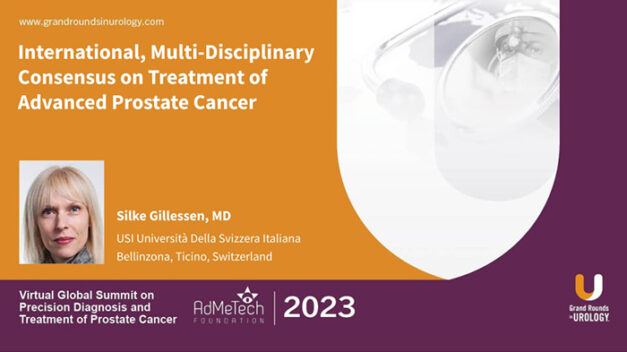PET Tumor Board: Case #4
In this discussion, E. David Crawford, MD, Professor of Urology and Jack A. Vickers Director of Prostate Research at the University of California, San Diego, leads a discussion of the case study of a healthy 80-year-old male with a history of BPH presenting with a rapid rise of PSA from a PSA of 3-4 ng/ml to 9.7 ng/ml and increased urgency and perception of difficulty fully voiding. He presents this case study to a panel of experts comprised of:
Wayne G. Brisbane, MD – Assistant Professor of Urology at the University of California, Los Angeles.
Phillip J. Koo, MD – Division Chief of Diagnostic Imaging and Northwest Region Oncology Physician Executive at the Banner MD Anderson Cancer Center.
Daniel P. Petrylak, MD – Director of Genitourinary Oncology, Professor of Medicine and Urology, Co-Leader of Cancer Signaling Networks, and Co-Director of the Signal Transduction Program at Yale University Cancer Center in New Haven, Connecticut.
After revealing that the patient had a PSA of 7.2 ng/ml after a 4-week course of Cipro, Dr. Crawford tells the panel that his recommendation was for the patient to undergo an mpMRI, with possible biopsies. This revealed that the patient had a 65g prostate with a PI-RADS 5 lesion, and several suspicious pelvic nodes. After 12 core biopsies, each core had a Gleason Score of 4 or 5.
Dr. Crawford then asks the panel to weigh in on the next steps for imaging for the patient. Dr. Petrylak and Dr. Koo both recommend PSMA PET scanning over bone scans as the appropriate next step.
Dr. Crawford presents the results of the patient’s PSMA PET scan, which revealed extensive skeletal disease, to the panel. Dr. Petrylak recommends ADT, and debates the use of doublet or triplet therapy for the patient. Dr. Brisbane points out that the patient’s PSA level does not necessarily reflect the burden of disease, and Dr. Petrylak agrees.
Finally, the panel discusses the possibility of using PSMA PET scan for the primary. The panel is ambivalent, citing the lack of long-term data supporting its use in the primary.
This is the fourth in a series of discussions on PSMA PET supported by Blue Earth Diagnostics. For the first installment, click here. For the second installment, click here. For the third installment, click here.





